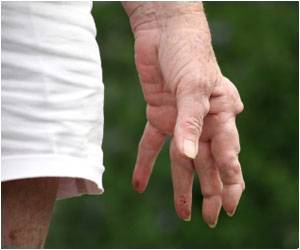“Even over a long-term follow-up, the transfer of fatty tissue to arthritic fingers joints appears to provide a safe and minimally invasive alternative to conventional surgery for patients with osteoarthritis,” comments lead author Max Meyer-Marcotty, MD, PhD, of Klinikum Lüdenscheid, Germany. They report their experience with 18 patients undergoing fat transfer procedures for finger osteoarthritis.
Good long-term outcomes after lipofilling for finger joint arthritis
In the lipofilling procedure, a sample of the patient’s own fatty tissue was obtained by liposuction from another part of the body: the upper thigh or hip area. Tiny volumes of fat cells – no more than one milliliter – were injected into the arthritic finger joints. Recovery was straightforward: patients wore a splint around the treated finger and took pain relievers for a week. There were no infections or other complications.
The researchers analyzed follow-up outcomes in a total of 25 finger joints treated by lipofilling. Hand function, pain scores, and patient satisfaction were evaluated an average of 44 months (maximum 50 months) after treatment.
Assessment showed a “highly significant clear improvement” in pain score: from a median of 6 points (on a 10-point scale) before treatment to 0.5 points at follow-up. “We believe that for our patients the reduction of pain represents the most striking and important result, which also has the most pronounced and highly significant effect,” Dr Meyer-Marcotty and colleagues write.
On functional evaluation, pinch grip strength of the treated fingers approximately doubled: from a median of 2.0 kilograms (kg) before lipofilling to 4.3 kg at follow-up. Force of fist closure and score on a standard assessment of hand function during everyday tasks also improved, although those differences were not statistically significant.
Osteoarthritis is a very common and potentially disabling condition. In severe cases, surgery is effective in relieving arthritis pain, but is associated with potential complications and lengthy recovery time. There is high interest in minimally invasive procedures such as lipofilling, as alternatives to surgery that do not destroy the involved joint.
In recent years, fat transfer procedures have been introduced for a growing range of purposes in plastic and reconstructive surgery. Animal studies have suggested that mesenchymal stromal cells (a type of stem cell) found in fatty tissues are capable of regenerating tissue in arthritic joints. The new study builds on previous results from the same research group, which showed promising improvements in pain and other outcomes up to 1 year after fat transfer.
The researchers note some important limitations of their procedure, including the lack of a control group of patients who did not undergo lipofilling. It also remains unclear exactly how lipofilling works to improve outcomes. In addition to possible long-term cartilage regeneration induced by mesenchymal stromal cells, the mechanical properties of the transplanted fatty tissue may provide a short-term benefit.
“Since the lipofilling procedure is nondestructive, conventional joint surgery can still be performed later, if needed.” The researchers emphasize the need for long-term follow-up studies in larger numbers of patients to further corroborate these initial positive findings.
Source: Eurekalert



